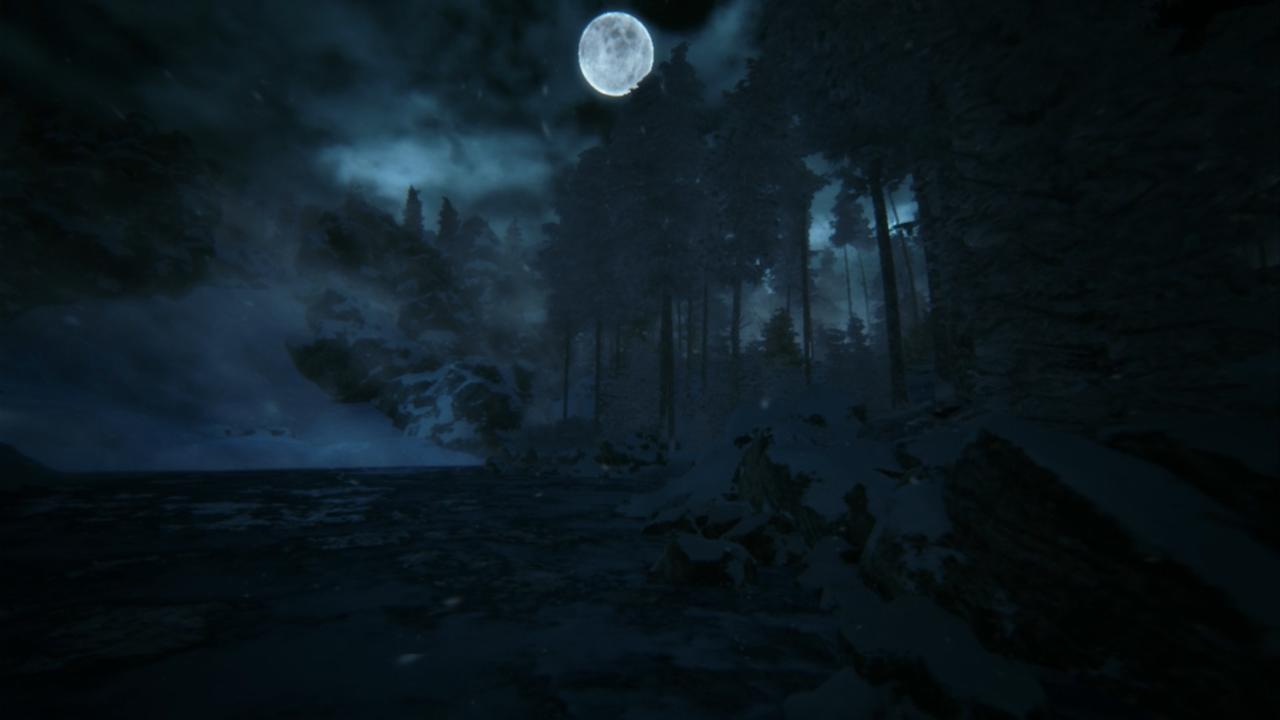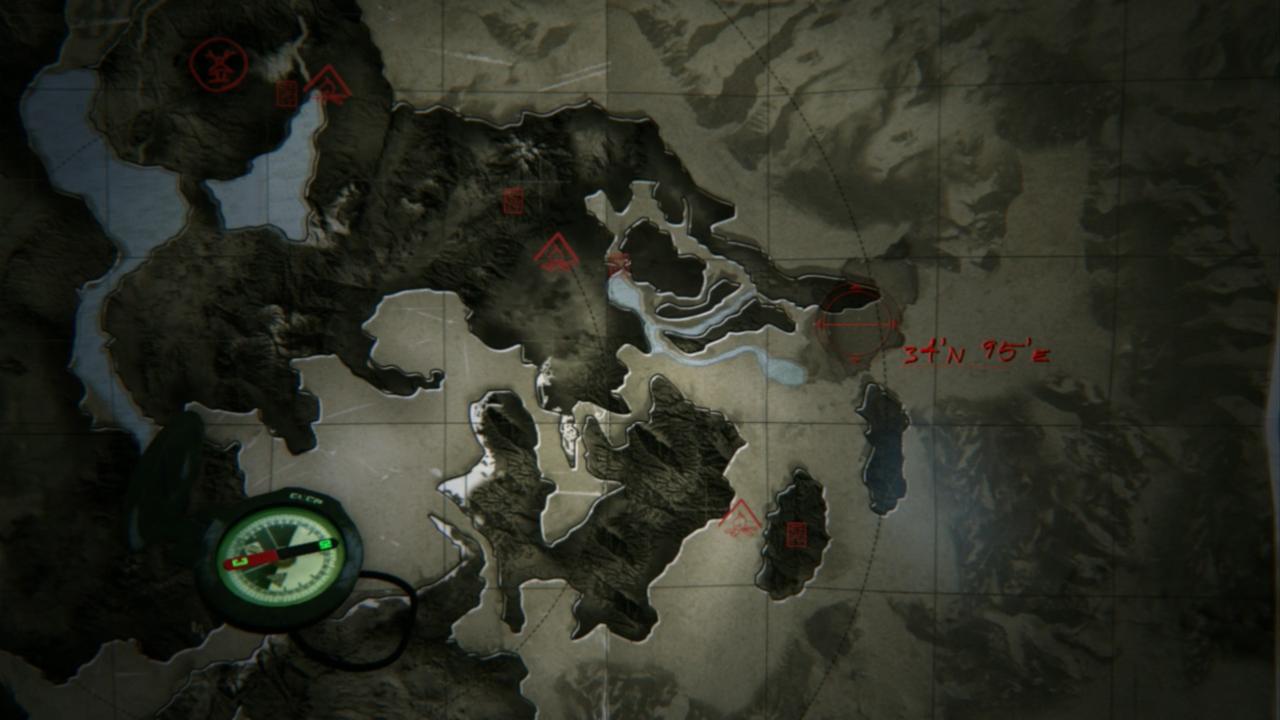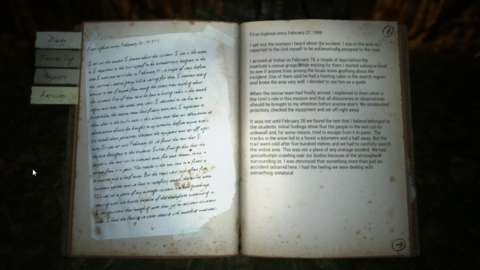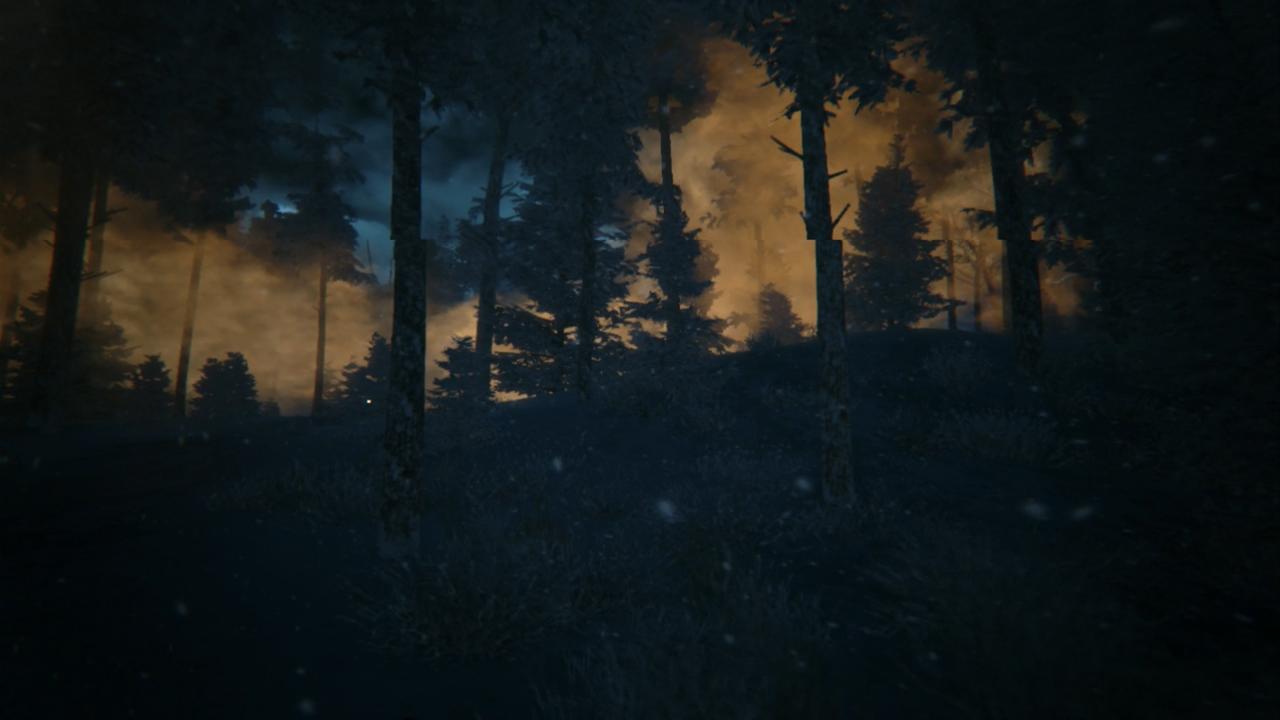Where preview peeks are concerned, Kholat does not make an ideal impression. It's an exploration game in which the simple act of walking could cause you to fall through its snowy mountains and out of the level, and a narrative game in which the music overpowers the narration and the volume sliders don't work. I have no idea whether these and numerous other bugs and frustrations I encountered will be indicative of the final adventure, but when they're so prominent, I can't simply overlook them with the assumption that they'll be fixed by release. The preview build is abysmal from a technical perspective, allowing me to get stuck in objects because I walked into areas before they spawned in, and sending me flying into the air and through the environment for no apparent reason. It is one of the most broken things I have ever been given to play.
Yet I respect Kholat after spending a few hours with it. I respect it because it introduced me to the Dyatlov Pass incident, an event that led to the death of nine skiers in Soviet Russia in 1959--and one that has had various supernatural theories ascribed to it. I have a soft spot for supernatural, pseudoscientific, and extraterrestrial conspiracies, the kind that relate to Area 51, Dulce Base in New Mexico, or the Philadelphia Experiment. The Dyatlov Pass incident has already been covered in speculative fiction, as it turns out, such as in the film Devil's Pass; Skeptics shy away from the more bizarre theories, of course, and typically assume that the victims panicked at signs of an avalanche, cut themselves out of their tent, and fled to their doom. I'll let you research the specifics, and draw your own conclusions. The point here, of course, is that Kholat begins with a premise that intrigues me, and game-killing bugs aside, it's a premise that drives me to learn more about it.

I can't say that Kholat revealed much about its own interpretation, however. This is a first-person adventure in the Dear Esther tradition, revealing story through the journal entries you find and the sights you see. There is also a cryptic voice-over, which I assume comes from my own character, though I cannot be sure. If so, he appears to have once been dead, apparently a victim to whatever tragedy befell the region. He intones that he is--or was--blind, though I can see just fine, though again, I am making a lot of assumptions in the face of Kholat's secrecy. The first minutes revel in their opacity: I am in the midst of a snowy clearing, surrounded by mountains that reach to the skies, and a glowing orange figure appears, then dissipates as I approach. I follow the obvious path to a ledge where rocks fall on my and pummel me to death. This is not, as it turns out, going to be a peaceful journey.
After a restart, I pause before the rocks can land on me, and follow the path into a cavern. The narrator calls out, asking if it is "you," though no one is yet in sight, but as I turn the corner, I see another glowing silhouette, and I approach. Well, this is not a friendly kind of ghost; it gets in my face in a rather impolite manner, and I'm forced to start again.


Finding your way through Kholat requires lots of fits and starts like this until you get your bearing. The next surprise emerges when I encounter a throne with the skeletal remains of some kind of antlered man-creature seated upon it. Seconds later, orange mist creeps into the room, and I flee, though I fall through the floor after a few moments and must restart yet again. The next time, I stick around to see what the orange mist might do. It kills you, it turns out: letting it creep into your own lungs causes one of those terrible creatures to rise in front of you and do...whatever it does to make you die. (Their mechanism of murder is never clear.) In time, it is obvious that anything that glows orange is a bad thing, except that initial figure, which seems to be leading me somewhere. Or maybe I am assuming as much. Kholat is nothing if not secretive.
There is another exception to the rule of orange. As I emerge from another cavern and onto a straight path, dozens of orange figures fade into view, fleeing some tragedy, and I instinctively break into a run myself. The mist is again encroaching, and it is filling my field of view to either side. I don't quite make my escape, and another orange mutant-demon intrudes on my personal space. The next time, I am unscathed, and this is when the game truly opens up. I have a large, icy map to investigate, and I am still unsure what I am supposed to be doing and where I am supposed to be going.


The map gives me the answers. Everywhere you go, you find that someone has scribbled the map coordinates on rocks and other surfaces. When you look at your map, you see a list of coordinates that you apparently must check out, and a compass helps you navigate the region amid the howling wind and snow. The primary gameplay system is one of avoidance: you should avoid contact with the weird entities you occasionally find floating around. This is not a game about "what," however, but one about "where." The preview version brought several high-end PCs to their knees, forcing me to play at a hazy 1280 X 720, but the chilling ambience was apparent, even so. New sights have you pondering their meaning. I encounter several lone, massive trees that provide a safe haven from the cold, the snow blowing around them as if there were an invisible field protecting them. What are they here for? What force is causing them to be immune to nature's frigid will? What beings erected objects like the altar you encounter in a cave? I need to know more.
Journal entries that you inexplicably find and read offer some insight, but this contrived method of storytelling is growing tiresome in games, and it feels particularly out of place here, where wind and rockslides would carry away a piece of paper, especially the one I discovered that was just sitting in the middle of the air, attached to nothing at all, like so many of the game's rocks and bushes. I don't think this was Kholat's way of telling me that some kind of odd power was holding it in place. Instead, it was just another bug to contend with in a demo so loaded with them that I gave up after three hours of wandering. The straw that broke the camel's back? The ground gave way at one point--purposefully, it seems--but the rubble fell in a way that got me stuck inside of it. I considered going back to the main menu and continuing at the last save point, but I was exhausted with the demo's brokenness. I wouldn't normally be so alarmed, but Kholat is due to be released in just over a month.

Kholat is a game that speaks to me because of its supernatural mystery and its snowy environments. I hope against hope that it is not this broken upon release, because I want to know what happens. I want to know more about the orange figures that signaled doom. I want to know more about the smoldering forest that sits in the midst of the frosty mountains. Maybe, just maybe, it will be worth facing a potentially buggy game to discover the truth. I certainly hope so, because I long for answers.

